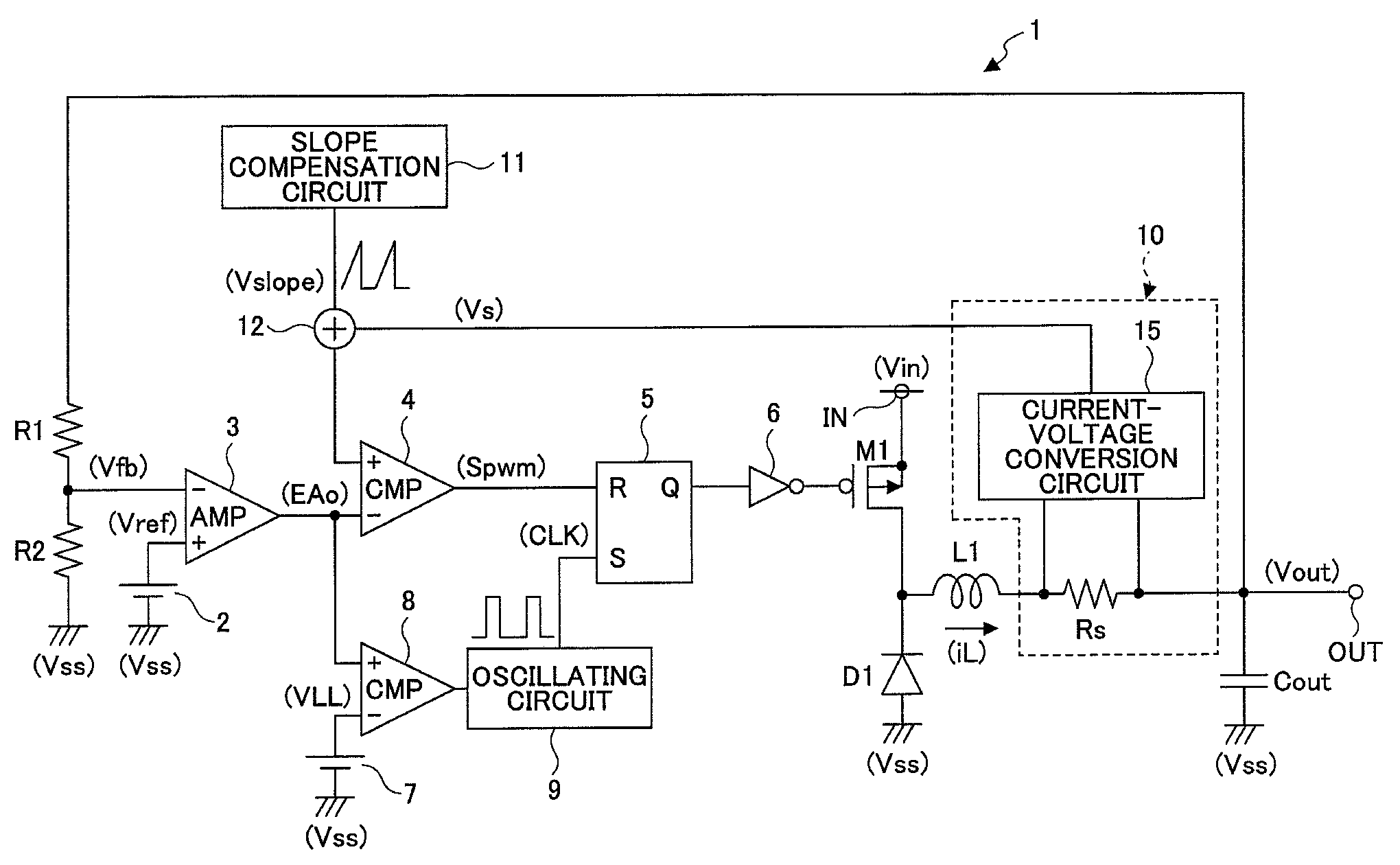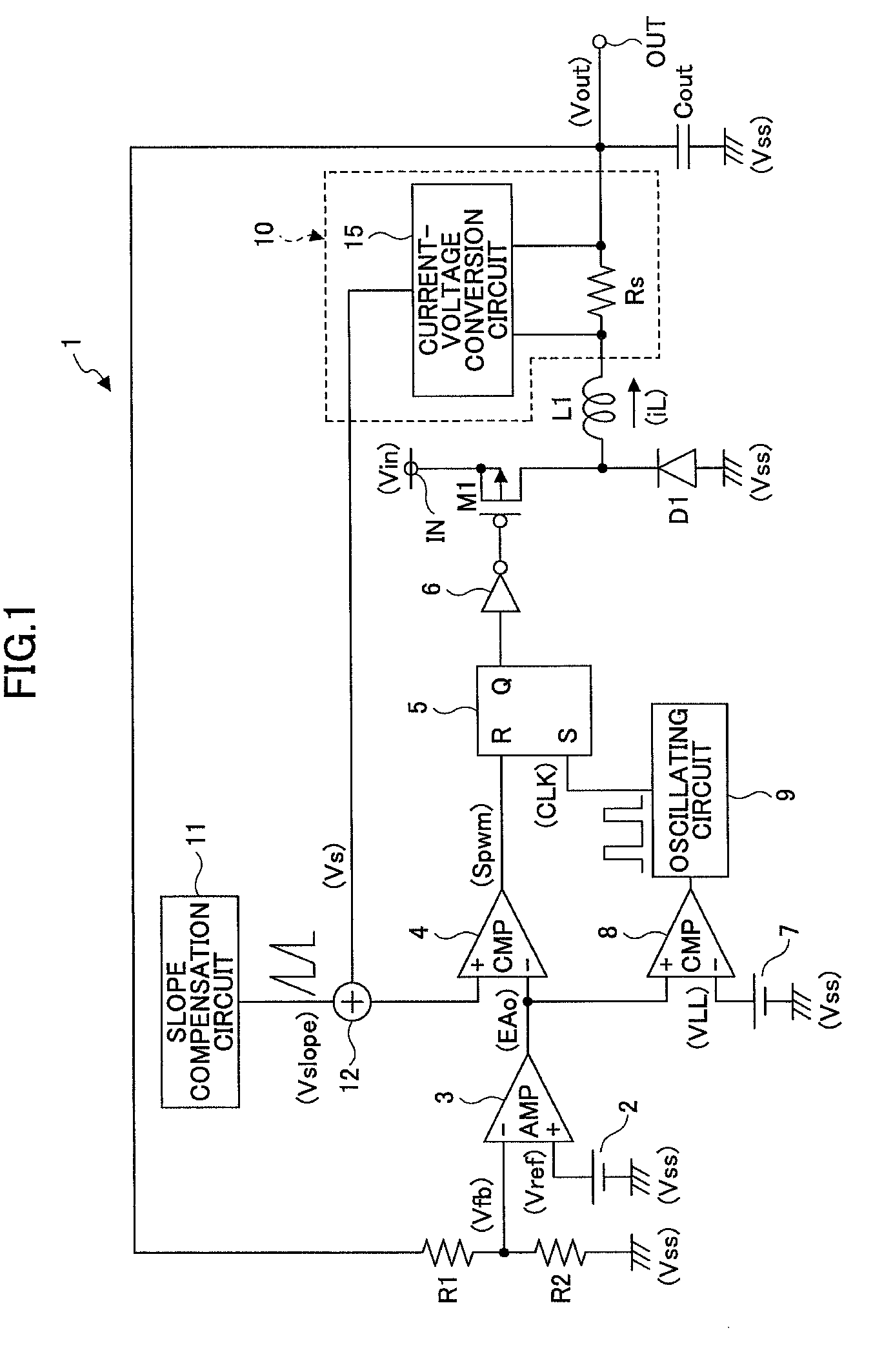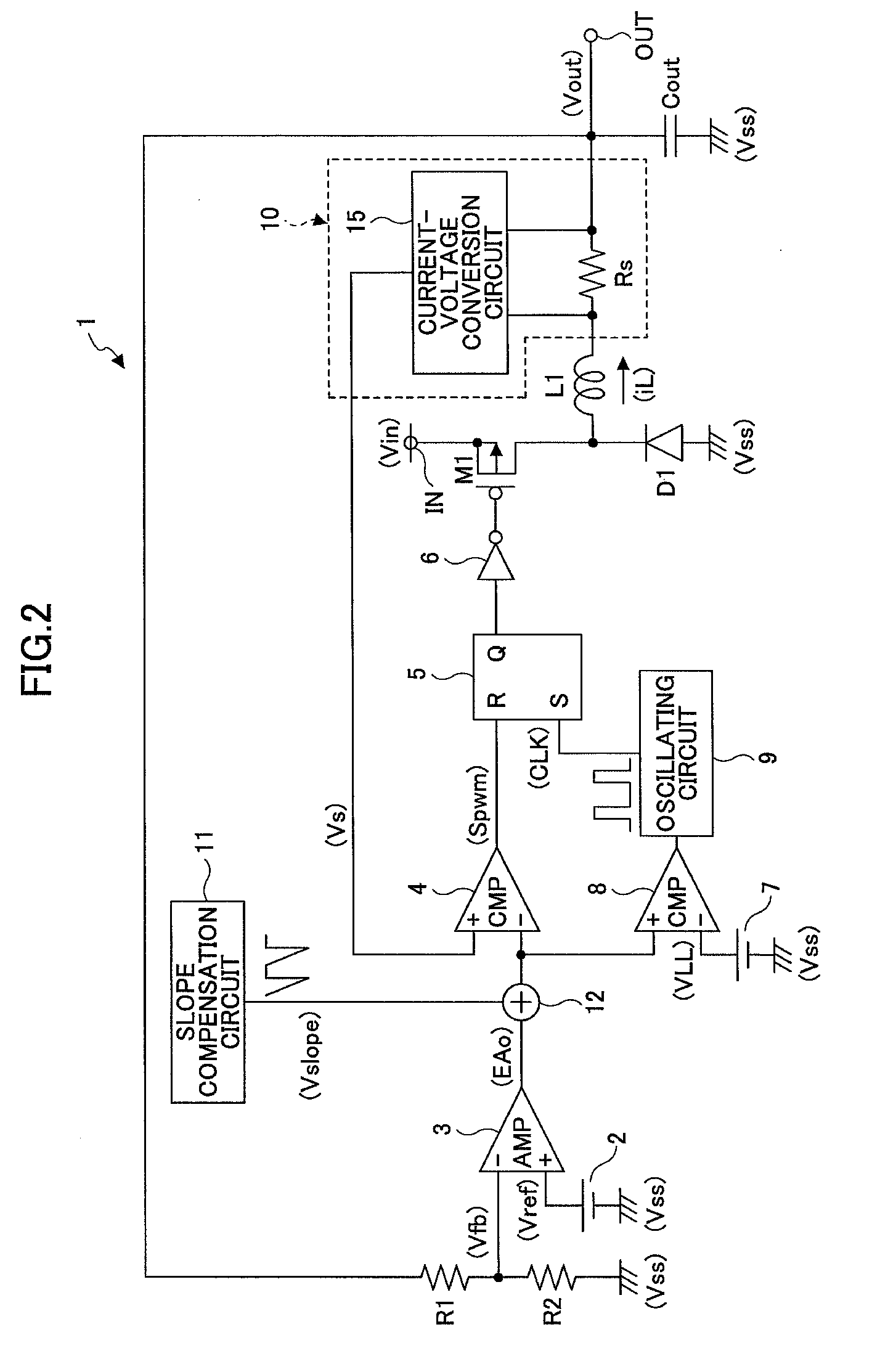Switching regulator
- Summary
- Abstract
- Description
- Claims
- Application Information
AI Technical Summary
Benefits of technology
Problems solved by technology
Method used
Image
Examples
first embodiment
[0033]FIG. 1 illustrates a circuit example of a switching regulator according to a first embodiment of the present invention.
[0034]As shown in FIG. 1, a switching regulator 1 constitutes a step-down switching regulator employing an asynchronous rectification method, which steps down an input voltage Vin which has been input to an input terminal IN to a predetermined constant voltage, and outputs this voltage as an output voltage Vout from an output terminal OUT.
[0035]The switching regulator 1 includes a switching transistor M1 constituting a PMOS transistor, configured to perform a switching operation to implement output control of the input voltage Vin. The switching regulator 1 also includes a diode D1 constituting a flywheel diode for rectification.
[0036]The switching regulator 1 includes a reference voltage generating circuit 2 for generating a predetermined reference voltage Vref, resistors R1 and R2 for detecting the output voltage, an inductor L1, an output capacitor Cout, an...
second embodiment
[0060]In the first embodiment, a switching regulator employing an asynchronous rectification method is taken as an example. The present invention is also applicable to a switching regulator employing a synchronous rectification method with which the power conversion efficiency can be improved. A second embodiment according to the present invention has such a configuration.
[0061]FIG. 4 illustrates a circuit example of a switching regulator according to the second embodiment of the present invention. In FIG. 4, elements corresponding to those in FIG. 1 are denoted by the same reference numbers, and are not further described. Only the different elements are described below.
[0062]The difference between FIG. 4 and FIG. 1 is that the circuit shown in FIG. 4 includes a synchronous rectification transistor M2 instead of the diode D1; a comparator 21 for detecting and preventing a reverse current, whereby the reverse current occurs when the inductor current iL flows from the output terminal ...
PUM
 Login to View More
Login to View More Abstract
Description
Claims
Application Information
 Login to View More
Login to View More - R&D
- Intellectual Property
- Life Sciences
- Materials
- Tech Scout
- Unparalleled Data Quality
- Higher Quality Content
- 60% Fewer Hallucinations
Browse by: Latest US Patents, China's latest patents, Technical Efficacy Thesaurus, Application Domain, Technology Topic, Popular Technical Reports.
© 2025 PatSnap. All rights reserved.Legal|Privacy policy|Modern Slavery Act Transparency Statement|Sitemap|About US| Contact US: help@patsnap.com



